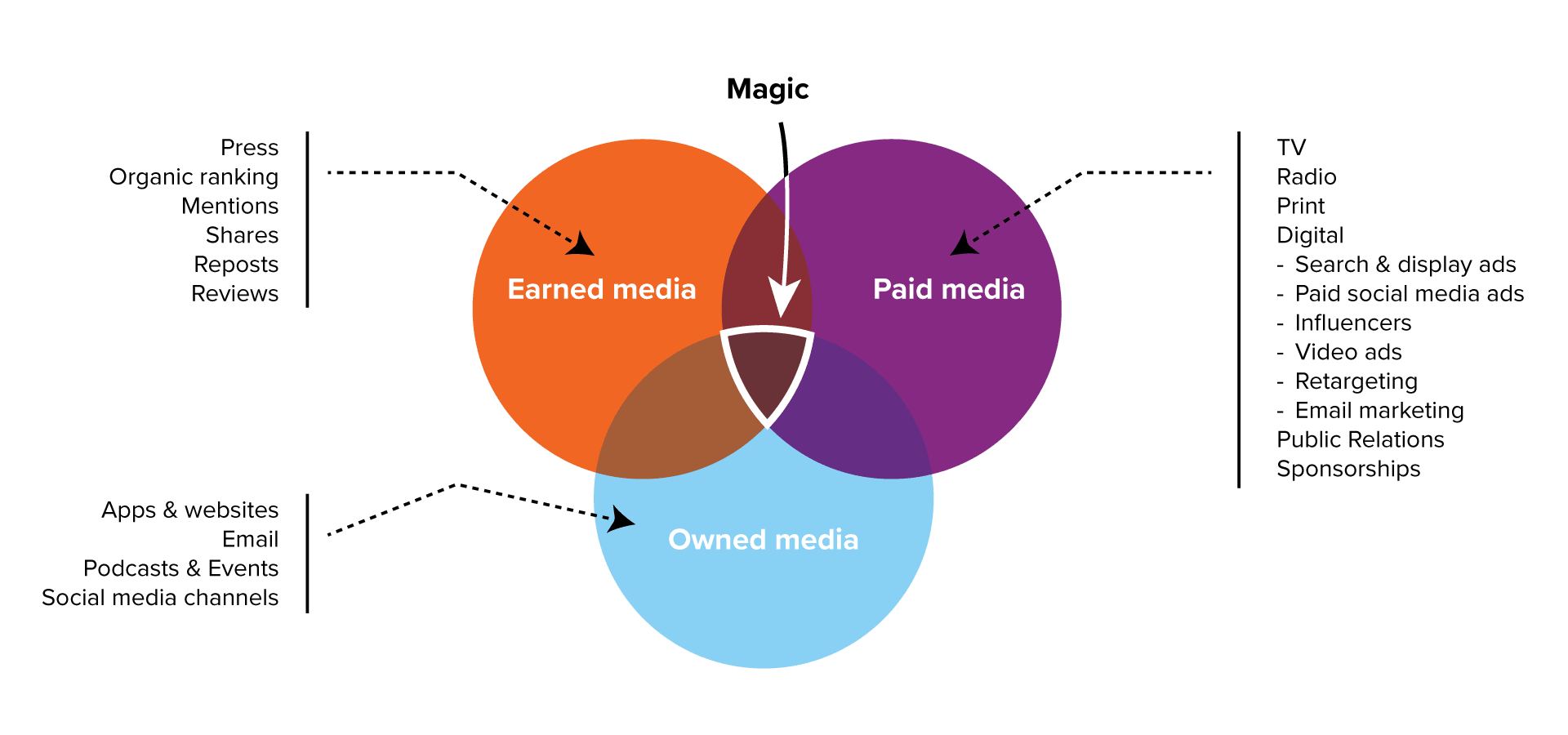While there’s a vast array of marketing tactics that can be effective in any given scenario, earned media holds the greatest, most lasting power in influencing action. Leveraging earned media is an important facet of any marketing mix. Let’s explore its crucial role in building brand credibility and reputation, examining its influence and strategies for leveraging its potential.
Brand credibility and reputation are paramount for business success, especially where you’re in a competitive market where customers can choose other similar products or services. Trust and reputation are highly influential in making purchasing decisions. With the most trusted and credible brands, customers have made their decision before they’ve even checked out other options.
Understanding earned media
Earned media refers to brand exposure received through organic, unpaid channels. It includes press coverage, social media mentions, online reviews, and word-of-mouth recommendations. Unlike owned or paid media, earned media is generated by external sources, making it more credible and influential in the eyes of potential customers. It’s the vital 3rd party endorsement that backs up any marketing claims that might have been made in campaigns.
Building brand credibility through earned media
Establishing trust and authenticity is vital for brand credibility. And the great news is that earned media can significantly contribute to achieving this. Of course, giving people the opportunity to generate earned media on your behalf is an art form. These days, influencers also blur the lines between earned and paid media by essentially endorsing products for a fee. Then their followers generate more earned media through their likes, follows and comments, creating even greater visibility for the brand, product or service. Interestingly, while most people are aware that influencers are paid to endorse products, because they have trust in the influencer’s own brand, that trust is reflected on the brand they are endorsing.
Another example of building brand trust with earned media is positive customer experiences and testimonials – both powerful tools for enhancing credibility. When customers share their positive experiences on social media or through online reviews, it creates trust among potential buyers. Let’s look at some examples you might know.
Blendtec, a blender manufacturer, experienced this first hand with its “Will It Blend?” campaign. The viral YouTube videos showcasing the blender blending unusual items like smartphones and golf balls. Whilst the content was all pretty fun, the product was always front and centre and ultimately, every video showed just how tough and powerful the blenders are. The campaign generated millions of views, comments and widespread media coverage. Such customer endorsements enhance brand credibility and drive sales.
Old Spice’s “The Man Your Man Could Smell Like” campaign was another that gained significant attention on social media. In addition to the shares, likes, comments and other user-generated content, the campaign’s humorous commercials were so popular that they even generated responses and parodies, including from influential individuals and celebrities, fostering trust and credibility among consumers.
Enhancing brand reputation through earned media
Growing a brand’s reputation can be a challenge, but through the use of earned media, brands can contribute to the enhancement of its reputation, thereby contributing to long-term success and customer loyalty.
Expanding brand reach and visibility is a key benefit of earned media. The “Go Near” campaign, launched by Airbnb in response to the COVID-19 pandemic, encouraged people to explore and support local destinations within driving distance of their homes. The campaign aimed to rebuild trust and confidence in travel by highlighting nearby, off-the-beaten-path destinations and promoting responsible and safe travel practices. By leveraging earned media channels, such as press coverage and social media, Airbnb successfully generated widespread attention and positive conversations around the campaign.
By emphasising local travel, supporting small businesses, and promoting safety measures, the “Go Near” campaign tapped into the power of earned media to spread its message and generate positive brand associations. The campaign’s success can be attributed, in part, to the organic reach and credibility that earned media provides, as people tend to trust recommendations and information from independent sources.
Another avenue brands must consider when leveraging communities is how to involve yourself in timeous discussions. Managing and responding to online reviews and feedback is essential for reputation management. But it’s not just about customer service, it can (and at times should) be fun too. Oreo’s agile response during the 2013 Super Bowl power outage demonstrated this. The tweet, “Power Out? No problem. You can still dunk in the dark,” went viral, receiving widespread media attention and praise for its timeliness and wit. By actively engaging with online conversations, brands can address concerns, provide exceptional customer service, and turn negative situations into positive opportunities, reinforcing their reputation.
Leveraging earned media for long-term success
To maximise the potential of earned media, brands should adopt proactive strategies and incorporate them into their overall marketing and communication plans.

Cultivating ongoing relationships with journalists and influencers could be crucial. Building and nurturing these relationships can lead to increased media coverage and high profile collaborations. Dove’s “Real Beauty Sketches” campaign exemplifies this approach. By partnering with a forensic artist and conducting an experiment challenging beauty standards, the campaign generated significant media coverage and sparked conversations about self-esteem and body image, reinforcing Dove’s commitment to real beauty.
Integrating earned media efforts with owned and paid media channels ensures a cohesive brand message. By aligning earned media coverage with owned media platforms like websites and social media, brands can amplify their messaging and leverage the credibility earned through media coverage.
As an integrated marketing agency, seeing this kind of harmony among communications thrills us. It’s a great example of how you can leverage multiple channels in a seamless way to multiply the impact of your message without a commensurate multiple on your budget.
“
…brands should focus on…integrating earned media efforts with owned and paid media channels
”
Successful case studies such as Blendtec’s “Will It Blend?” campaign, Old Spice’s “The Man Your Man Could Smell Like” campaign, Airbnb’s “Airbnb “Go Near” campaign, Dove’s “Real Beauty Sketches,” and Oreo’s agile response during the Super Bowl power outage exemplify the effectiveness of earned media in boosting brand credibility and reputation. These brands strategically utilised earned media to generate widespread attention, increase brand awareness, and reinforce their brand values. By consistently Integrating earned media efforts with owned and paid media channels, and actively managing online reviews and feedback, brands can further enhance their credibility and reputation.
In today’s digital landscape, where consumers have access to abundant information and opinions, an integrated approach to your marketing stands as a powerful tool to shape public perception. Brands that harness the power of this approach will not only establish themselves as trustworthy and credible but also differentiate themselves from the competition, ultimately leading to sustainable success.





Be the first to comment on "The role of earned media in building brand credibility and reputation"